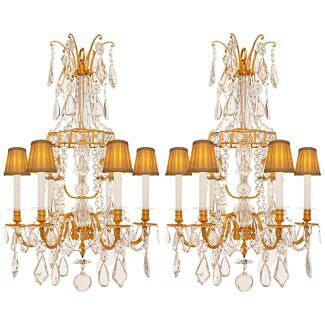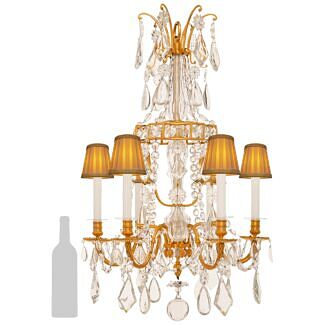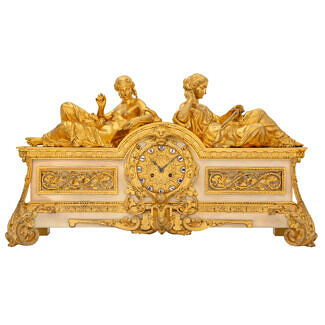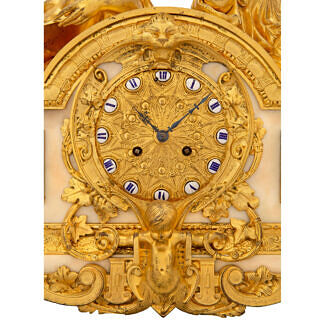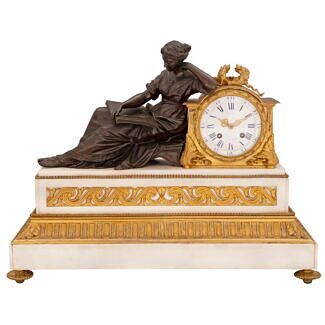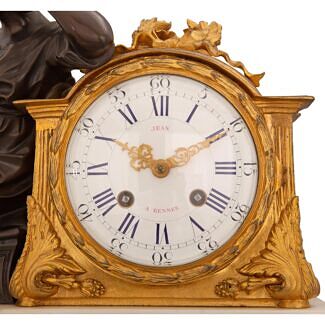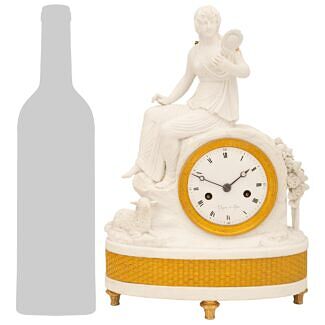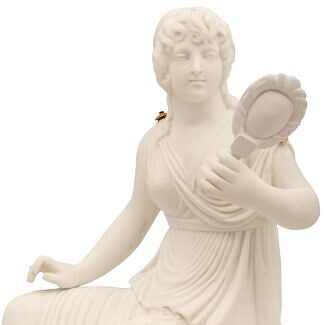A French early 19th century Neo-Classical st. white Carrara, Rouge Griotte marble and Ormolu clock, attributed to Étienne Maurice Falconet
List: $13,800.00
A beautiful and most attractive French early 19th century Neo-Classical st. white Carrara, Rouge Griotte marble and Ormolu clock, attributed to Étienne Maurice Falconet. This wonderful mantel clock is raised on a rectangular Rouge Griotte marble base with a foliate... — Read More
A beautiful and most attractive French early 19th century Neo-Classical st. white Carrara, Rouge Griotte marble and Ormolu clock, attributed to Étienne Maurice Falconet. This wonderful mantel clock is raised on a rectangular Rouge Griotte marble base with a foliate decorated Ormolu band atop while being supported on four Ormolu bun feet in each corner. Above the marble base is a white Carrara marble maiden with a loose fitting garment wrapped around her shoulder a waist as she sits atop a rock with flowing water running off the edge. Within the center of the rock is the circular enameled clock face containing black Roman numerals and 'Mesnil å Paris' in the center, as well as pierced scrolling hands. The clock face opens and reveals a highly detailed Coeur-de-Rai and beaded Ormolu band. The rear of this clock opens to reveal its original hardware, which are all in working order. — Read Less
- Item # 14224
-
H: 16.75 in L: 16 in D: 5.25 in
H: 43 cm L: 41 cm D: 13 cm
- France
- 19th Century
- Marble/Stone, Ormolu
- Neo-Classical st. Read More
- Étienne Maurice Falconet Read More
Related products
-
# 13736 - H: 35" L: 22" D: 22"
A pair of French 19th century Louis XVI st. Ormolu and Baccarat Crystal Marie Antoinette chandeliers
-
# 5638 - H: 14" L: 25" D: 7"
-
# 2440 - H: 18" L: 23" D: 9"
-
# 3018 - H: 12" L: 8" D: 4"


























